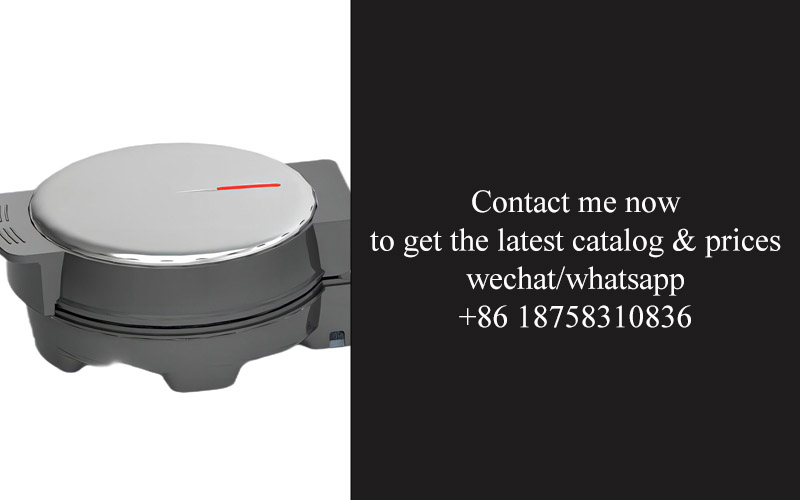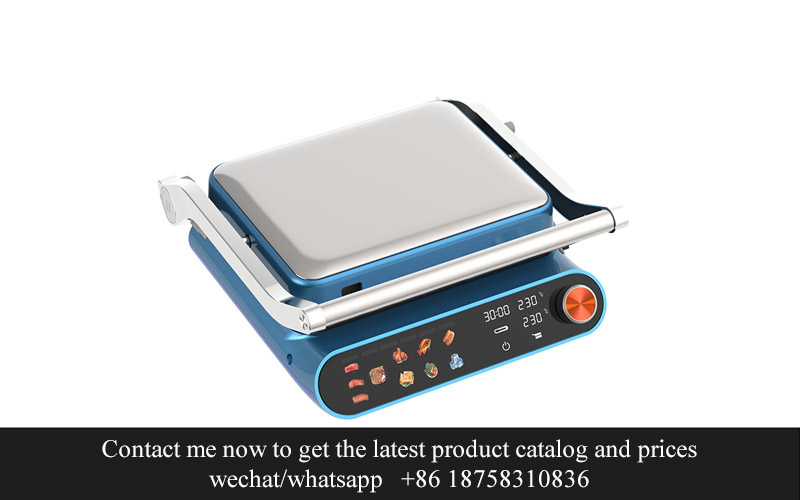Address
304 North Cardinal
St. Dorchester Center, MA 02124
Work Hours
Monday to Friday: 7AM - 7PM
Weekend: 10AM - 5PM
Address
304 North Cardinal
St. Dorchester Center, MA 02124
Work Hours
Monday to Friday: 7AM - 7PM
Weekend: 10AM - 5PM

In a world where kitchen appliances have become an integral part of our daily lives, the quest for convenience and quality has never been more pronounced. Among these essential tools, non-stick cookware stands out as a favorite for its ease of use and ability to create delectable dishes without the need for excessive oil. As we delve into the advancements in this field, one certification has emerged as a beacon of trust and quality: LFGB compliance. This article explores the significance of LFGB certified non-stick coatings, their impact on consumer confidence, and the evolving landscape of the cookware market.
The evolution of non-stick cookware is a fascinating journey that has transformed the way we cook and clean in the kitchen. It all began with the humble frying pan, and now, we have a plethora of options that make cooking a breeze and cleaning a cinch. Let’s take a quick glance back at how non-stick cookware has evolved over the years.
Once upon a time, cooks relied on cast iron skillets and heavy stainless steel pans, which required a lot of oil and constant attention to prevent sticking. The idea of a non-stick surface was revolutionary, offering a cooking experience that was both healthier and easier. The first non-stick coating, Teflon, was introduced by DuPont in the 1950s and quickly became a game-changer.
Teflon’s initial success was due to its unique chemical composition, which created a slippery surface that prevented food from sticking. However, as the years went by, concerns about the potential health risks of Teflon began to surface. The chemical PFOA, used in the manufacturing process, was linked to various health issues, prompting a shift in the industry.
Enter the era of eco-friendly non-stick coatings. Companies started looking for alternatives that were both safe and effective. One such alternative was ceramic non-stick coating, which became increasingly popular. Ceramic coatings are free from PFOA and other harmful chemicals, making them a healthier choice for consumers.
But the innovation didn’t stop there. Another significant development was the introduction of stainless steel cookware with non-stick properties. These pans combine the durability of stainless steel with the convenience of a non-stick surface, offering the best of both worlds.
Today, we see a variety of non-stick coatings, each with its own unique benefits. Some are designed to be more durable, while others focus on being environmentally friendly. There are even coatings that are PFOA-free and have a longer lifespan, reducing the need for frequent replacements.
One of the latest advancements in non-stick technology is the introduction of LFGB compliant non-stick coatings. LFGB stands for Lebensmittel- und Futtermittelbestimmungen, which translates to Food and Feed Code in English. This German standard is one of the most rigorous in the world and ensures that cookware is safe for use in the kitchen.
LFGB compliant non-stick coatings undergo rigorous testing to meet the strictest safety requirements. They are free from harmful substances like PFOA, PFAS, and cadmium, ensuring that they are safe for cooking with food that is intended for human consumption. This certification gives consumers peace of mind, knowing that their cookware is not only convenient but also safe.
As the demand for high-quality, safe cookware continues to grow, manufacturers are constantly pushing the boundaries of non-stick technology. Some are experimenting with new materials, while others are focusing on improving the longevity and performance of existing coatings.
One notable innovation is the use of titanium-infused non-stick coatings. These coatings provide an extra layer of durability and scratch resistance, making them ideal for everyday use. Additionally, they maintain their non-stick properties even after years of use, which is a significant advantage over older coatings.
Another exciting development is the introduction of induction-compatible non-stick cookware. With the rise of induction cooktops, it’s essential for cookware to be compatible with this technology. Non-stick pans that work with induction offer the same convenience as their conventional counterparts, but with the added benefit of being more energy-efficient.
The evolution of non-stick cookware has not only made cooking more enjoyable but has also brought about a greater awareness of health and safety in the kitchen. As we continue to see advancements in technology, it’s clear that the future of non-stick cookware is bright, offering a wide range of options that cater to the needs and preferences of modern cooks.

The European Union’s stringent regulations have long been a benchmark for quality and safety in the global market. The LFGB (Legislative Framework for the German Federal Institute for Risk Assessment) compliance has emerged as a gold standard, particularly in the realm of kitchenware. In the United States, where health and safety are paramount, the adoption of LFGB standards has been a gradual yet significant shift.
European consumers have always been discerning when it comes to the products they bring into their homes. The LFGB certification, which is recognized across the EU, ensures that products meet rigorous safety requirements. This has led to a surge in demand for LFGB compliant non-stick cookware, as consumers seek reassurance that the products they use are free from harmful substances.
The American market, while not as strictly regulated as Europe, has also seen a growing interest in LFGB compliant products. American consumers, influenced by European trends and the increasing awareness of health issues, are more likely to opt for cookware that carries this certification. Brands that can tout LFGB compliance are often perceived as being of higher quality and safety, which can give them a competitive edge.
The rise of LFGB compliance in both markets can be attributed to several factors. Firstly, the health scare surrounding certain non-stick coatings, such as PFOA (perfluorooctanoic acid), has prompted manufacturers to seek alternative, safer solutions. LFGB compliant non-stick coatings, like those that use PTFE (polytetrafluoroethylene), have become a popular choice due to their non-toxic nature.
Secondly, the globalization of the kitchenware industry has played a role. As manufacturers expand their reach beyond national borders, they find it beneficial to adhere to international safety standards to ensure their products are accepted worldwide. This has led to a consolidation of quality control measures, with LFGB compliance becoming a key aspect of product development.
Additionally, the rise of health-conscious consumers has fueled the demand for LFGB compliant cookware. People are more aware of the potential health risks associated with certain chemicals found in non-stick coatings, and they are actively seeking out alternatives. This shift in consumer behavior has pushed manufacturers to innovate and offer safer, more sustainable options.
In Europe, the LFGB certification is not just a mark of quality; it’s a legal requirement for certain products. This means that manufacturers must undergo thorough testing and certification processes to ensure their products meet the LFGB standards. The certification process is rigorous, involving detailed inspections of materials, manufacturing processes, and finished products.
In the United States, while LFGB certification is not a legal requirement, it is still a significant indicator of a product’s safety and quality. American manufacturers that choose to obtain LFGB certification do so to differentiate their products in a crowded market. This certification can also open up new markets for these brands, as many European retailers require LFGB compliance for their kitchenware sections.
The LFGB compliance also reflects a broader trend towards sustainability and environmental responsibility. As consumers become more environmentally aware, they are looking for products that are not only safe for their health but also for the planet. LFGB compliant non-stick cookware, with its eco-friendly coatings and durable construction, aligns with these values.
Moreover, the LFGB certification process encourages manufacturers to continuously improve their products. The ongoing testing and certification ensure that products remain up to date with the latest safety standards, which can lead to innovations in non-stick technology. This, in turn, benefits consumers by providing them with the latest advancements in cookware that are both safe and efficient.
In conclusion, the rise of LFGB compliance in European and American markets is a testament to the increasing importance of safety and quality in the kitchenware industry. As consumers become more informed and health-conscious, the demand for LFGB compliant non-stick cookware is likely to continue growing, pushing manufacturers to meet these high standards and innovate for a safer, healthier future.

The non-stick coatings that we’ve come to love and rely on in our kitchens are more than just a convenience; they’re a testament to the evolution of cookware technology. LFGB compliant non-stick coating, in particular, has become a benchmark for quality and safety. Here’s what it means for consumers looking to enhance their culinary experiences.
When it comes to non-stick coatings, the term “LFGB compliant” carries significant weight. LFGB stands for “Legislative Framework for the German Federal Institute for Risk Assessment” and it’s a set of stringent safety standards set by the German government. These standards are among the most rigorous in the world, ensuring that products, including non-stick cookware, meet high safety and health criteria.
Consumers who prioritize health and safety will find great comfort in knowing that LFGB compliance means that the non-stick coating on their cookware has been tested for potential health hazards. It ensures that the coating does not contain harmful substances like perfluorooctanoic acid (PFOA) or polytetrafluoroethylene (PTFE), which can be harmful if ingested or released into the food.
The “compliant” aspect of LFGB certification is particularly reassuring. It means that the manufacturer has gone through a thorough certification process, involving not just the product itself but also the production process. This includes the handling and disposal of chemicals, ensuring that the environment is protected as well.
The durability of the non-stick coating is another aspect that consumers value. LFGB compliant non-stick coatings are designed to last, providing a longer lifespan for the cookware. This not only saves money in the long run but also reduces waste, as the consumer doesn’t have to replace their cookware as frequently.
When it comes to the cooking experience, LFGB compliant non-stick coatings are a game-changer. They reduce the need for excessive oil or butter, making it easier to cook healthier meals. This is especially beneficial for those following low-fat diets or looking to cut back on calories. The ease of cooking with these coatings also means less cleaning and more time to enjoy the meal.
The ease of food release is another advantage of LFGB compliant non-stick coatings. Whether you’re flipping eggs, sautéing vegetables, or browning meats, the non-stick surface allows for smooth and effortless movement of food, reducing the risk of burning and sticking. This is not only a convenience but also a safety feature, as it minimizes the chances of accidents in the kitchen.
For those concerned about the environmental impact of their kitchenware, LFGB compliant non-stick coatings offer peace of mind. These coatings are designed to be more sustainable, with fewer harmful chemicals that could leach into the environment during manufacturing or disposal. This eco-friendly approach aligns with the growing trend of consumers seeking products that are both safe and sustainable.
When shopping for non-stick cookware, the LFGB compliance label is a trust signal. It’s an assurance that the product has been tested and meets a high standard of safety and quality. Consumers can feel confident in their purchase, knowing that the cookware they bring into their homes has been rigorously vetted for potential health risks.
In summary, LFGB compliant non-stick coatings are more than just a marketing term; they represent a commitment to safety, durability, and environmental responsibility. For consumers, this means healthier cooking, easier maintenance, and the peace of mind that comes with knowing their cookware is safe for them and the planet.

In the ever-evolving world of kitchenware, non-stick coatings have become a staple in most households. But what lies ahead for this technology? Let’s take a peek into the future of non-stick innovations.
The development of non-stick coatings has come a long way since the introduction of Teflon in the 1950s. Initially, these coatings were a game-changer, allowing for easier cooking and less oil usage. However, concerns about the potential health risks of some non-stick coatings, such as the release of harmful chemicals at high temperatures, have prompted the industry to seek safer alternatives.
One such innovation is the use of ceramic coatings. These coatings are made from natural materials and are free from PFOA and PTFE, the chemicals found in traditional non-stick coatings. They offer excellent non-stick properties and are more durable, lasting longer than their predecessors. Ceramic coatings also have a lower coefficient of friction, making them easier to clean and more resistant to scratches.
Another exciting development is the introduction of plant-based non-stick coatings. Companies are now using plant extracts, such as bamboo and corn, to create eco-friendly and sustainable coatings. These coatings not only provide the non-stick benefits we’ve come to expect but also contribute to a greener planet. They are biodegradable and have a lower environmental impact compared to traditional coatings.
The future of non-stick technology also includes a focus on heat management. With advancements in materials science, new coatings are being developed that can withstand higher temperatures without degrading. This means that cooks can use these pans on higher heat settings without worrying about the coating breaking down or releasing harmful substances.
Smart cookware is another area where innovation is taking place. Imagine a non-stick pan that can adjust its cooking temperature to prevent sticking and ensure even heat distribution. This is not just a pipe dream; it’s becoming a reality. Some manufacturers are integrating temperature sensors into their cookware, allowing for precise control over the cooking process.
Additionally, the integration of self-cleaning properties into non-stick coatings is on the horizon. While non-stick pans are already easier to clean, new coatings could be engineered to require even less effort. Some researchers are exploring ways to incorporate self-cleaning agents into the coatings, which would break down food particles and make cleaning a breeze.
Durability is also a key focus for non-stick technology. Manufacturers are working on coatings that are not only non-stick but also resistant to wear and tear. This means that the non-stick properties will last longer, and the pans will maintain their quality over time.
Lastly, the customization of non-stick coatings is an emerging trend. Cooks have different preferences when it comes to cooking methods and materials. As a result, we may see a future where non-stick coatings can be tailored to individual needs. For example, some coatings could be designed for specific types of cooking, such as induction or slow cooking, or for particular types of food.
In conclusion, the future of non-stick technology is bright and filled with exciting possibilities. As consumers, we can look forward to safer, more sustainable, and more efficient cookware that will make our cooking experiences even better. The non-stick pans of tomorrow will not only be a joy to use but also a testament to the power of innovation in the kitchen.

In recent years, LFGB-certified non-stick cookware has gained significant popularity, and for good reason. This type of cookware offers a range of benefits that make it a favorite among both professional chefs and home cooks. Here’s a closer look at some of the key advantages:
Cooking with less fatOne of the most celebrated features of LFGB-certified non-stick cookware is its ability to allow for healthier cooking. The non-stick surface reduces the need for excessive amounts of oil, butter, or other fats, which can cut down on calories and help maintain a heart-healthy diet. This is especially beneficial for those who are watching their weight or trying to minimize their intake of unhealthy fats.
Easy to cleanCleaning up after cooking can be a daunting task, but with LFGB-certified non-stick cookware, the process is simplified. The non-stick coating prevents food from sticking to the pan, making it easier to release and clean off. This means less scrubbing and fewer worries about food particles lingering on the surface, which can lead to unwanted odors and bacteria growth.
Increased cooking efficiencyNon-stick cookware is known for its excellent heat distribution, which means food cooks more evenly and quickly. The surface doesn’t retain heat like traditional cookware, so you can use lower temperatures to achieve the desired cooking results. This not only saves energy but also helps prevent burning and overcooking, leading to tastier meals with fewer wasted ingredients.
Improved durabilityWhile traditional non-stick coatings have faced criticism for being flimsy and prone to peeling, LFGB-certified non-stick cookware often features more durable materials. These coatings are designed to withstand the rigors of daily use, including metal utensil usage, which can be harsh on less durable surfaces. This means your non-stick pan can last longer and retain its non-stick properties for a more extended period.
Safe for all types of cookingLFGB certification ensures that the non-stick coatings used on cookware are free from harmful substances like PFOA and PTFE, which have been linked to health concerns. This means you can cook a variety of foods on your non-stick cookware without worrying about toxic fumes or chemicals leaching into your food. Whether you’re sautéing, frying, or simmering, LFGB-certified non-stick cookware is a safe choice for all types of cooking methods.
Enhanced taste and presentationThe non-stick surface not only makes cooking easier but also improves the taste and presentation of your dishes. Since you’re using less fat, the natural flavors of the ingredients are more pronounced. Additionally, the clean, non-stick surface allows for a more attractive presentation of your food, whether you’re serving it at a dinner party or enjoying a quiet meal at home.
Environmentally friendlyThe reduced need for excessive oil and the longer lifespan of LFGB-certified non-stick cookware contribute to a more sustainable approach to cooking. By using less oil, you’re also reducing the amount of waste that goes into landfills, and the durability of these pans means they won’t need to be replaced as frequently, further reducing waste.
Versatility in kitchen useLFGB-certified non-stick cookware is incredibly versatile, suitable for a wide range of kitchen tasks. From making omelets and pancakes to stir-frying vegetables and searing meats, these pans can handle it all. The non-stick properties also make them great for baking, grilling, and even roasting, thanks to their even heat distribution and ease of use.
Cost-effectiveWhile LFGB-certified non-stick cookware may be a bit more expensive upfront than traditional cookware, the long-term benefits often outweigh the initial cost. The durability and ease of cleaning mean that you’ll save money on replacements and cleaning products over time. Plus, the healthier cooking aspect can lead to savings on medical expenses related to poor diet.
In conclusion, LFGB-certified non-stick cookware offers a host of benefits that make it a smart choice for any kitchen. From health and safety to convenience and environmental considerations, these pans are designed to enhance your cooking experience and contribute to a more sustainable lifestyle.

In the world of cookware, the presence of LFGB certification on non-stick coatings is a beacon of safety and quality. This European standard, derived from the German Food, Drug, and Cosmetic Act, has become a symbol of trust for consumers. Let’s delve into how LFGB compliance enhances both safety and trust in non-stick cookware.
The LFGB standard is rigorous, encompassing a wide range of requirements that ensure the safety of cookware. It covers aspects from the materials used in the manufacturing process to the final product’s ability to withstand high temperatures without releasing harmful substances. For non-stick coatings, this means that the materials used must be free from PFOA, PTFE, and other harmful chemicals that have been linked to health issues.
One of the key benefits of LFGB-certified non-stick cookware is the peace of mind it offers consumers. When you see the LFGB mark, you know that the product has been tested and meets stringent safety standards. This is particularly reassuring for those with sensitive health concerns, such as allergies or concerns about chemical exposure.
The safety aspect extends beyond just the materials used. LFGB compliance also ensures that the cookware is designed to minimize the risk of burns and accidents in the kitchen. Non-stick coatings that meet this standard are more durable and resistant to peeling, which means they can last longer and provide a safer cooking experience.
Trust is built on a foundation of transparency and reliability. LFGB certification demands that manufacturers provide detailed information about their products, including the composition of the non-stick coating. This level of disclosure allows consumers to make informed choices based on their values and health considerations.
Consumers are increasingly looking for eco-friendly and sustainable products, and LFGB compliance aligns with these values. By ensuring that non-stick coatings are free from harmful chemicals, LFGB-certified cookware is not only safe for the user but also for the environment. This eco-conscious approach resonates with consumers who are mindful of their carbon footprint and the impact of their purchases.
The durability of LFGB-certified non-stick cookware is another factor that enhances trust. These products are built to last, which means fewer replacements and a lower environmental impact over time. The longevity of the cookware also means that consumers can rely on their investment for years, reducing the need for frequent purchases and contributing to a more sustainable lifestyle.
Moreover, the safety and trust associated with LFGB compliance extend to the entire supply chain. Manufacturers must adhere to strict guidelines throughout the production process, from sourcing raw materials to the final assembly. This comprehensive oversight ensures that every aspect of the cookware’s creation is held to the highest standards, reinforcing the consumer’s trust in the brand.
In the realm of health and wellness, LFGB certification is a significant factor in the decision-making process. Consumers are more likely to choose cookware that is free from potentially harmful substances, as these products are often associated with healthier cooking practices. The absence of toxic chemicals means that the food prepared in LFGB-certified non-stick cookware is less likely to be contaminated by harmful substances, which is a major concern for many health-conscious individuals.
The aesthetic appeal of LFGB-certified non-stick cookware also plays a role in enhancing trust. These products often come with sleek designs and finishes that reflect a commitment to quality. The visual cue of the LFGB mark on the packaging or the cookware itself is a subtle yet powerful signal to consumers that they are purchasing a product that has been vetted for safety and reliability.
In conclusion, LFGB compliance in non-stick cookware is a testament to the manufacturer’s dedication to safety, health, and environmental responsibility. It provides consumers with a clear, recognizable standard that they can trust. Whether it’s the peace of mind that comes from knowing the product is free from harmful chemicals, the assurance of durability, or the alignment with eco-friendly values, LFGB certification is a key factor in building trust in the non-stick cookware market.

Non-stick pans have become a staple in many kitchens, and for good reason. Home chefs are constantly on the lookout for cookware that not only makes cooking easier but also meets their specific needs. Here’s a closer look at what these culinary enthusiasts seek in their non-stick pans:
The ease of cooking is a top priority for many home chefs. Non-stick surfaces are a game-changer because they eliminate the need for excessive oil, making it simpler to create healthy meals. The smooth, non-reactive coating allows for effortless food release, reducing the likelihood of sticking and the need for scraping, which can be time-consuming and frustrating.
Durability is another critical factor. Home chefs want cookware that can withstand the rigors of daily use without showing signs of wear. High-quality non-stick coatings, such as those that meet LFGB standards, are designed to be long-lasting, withstanding the test of time and repeated use.
Ease of cleaning is a significant consideration. After a long day of cooking, the last thing anyone wants is a daunting cleaning task. Non-stick pans are designed to be quick and easy to clean, often requiring only a quick rinse or a quick wipe with a damp cloth. This feature is particularly appealing to busy home cooks who value efficiency in the kitchen.
Health and safety are paramount in the minds of many home chefs. They look for non-stick pans that are free from harmful chemicals like PFOA and PTFE, which are known to be toxic. LFGB-compliant non-stick coatings ensure that the cookware is safe to use and does not leach harmful substances into the food.
Eco-consciousness is on the rise, and many home chefs are seeking out cookware that aligns with their environmental values. Non-stick pans that are made with sustainable materials or are designed for longevity are increasingly popular. These pans not only reduce waste but also contribute to a more sustainable lifestyle.
Functionality is a key aspect of non-stick pans. Features like induction-compatible bases, which offer greater efficiency and allow for cooking on induction cooktops, are highly sought after. Additionally, pans with ergonomically designed handles and comfortable grip areas make cooking a more enjoyable experience.
Aesthetics also play a role in the selection of non-stick pans. Home chefs often look for cookware that complements their kitchen decor. Non-stick pans come in a variety of colors and designs, allowing for a personalized touch that adds a touch of style to the kitchen.
Ease of maintenance is crucial. Non-stick pans that can be safely washed in the dishwasher save time and effort. This feature is particularly appreciated by those who prefer not to hand wash their dishes or who have limited time to spend on kitchen chores.
Lastly, price is a significant consideration. Home chefs are often looking for the best value for their money. Non-stick pans that offer a balance between quality, functionality, and affordability are often the ones that stand out.
In summary, home chefs seek non-stick pans that are user-friendly, durable, easy to clean, safe, eco-friendly, functional, aesthetically pleasing, easy to maintain, and budget-friendly. The combination of these qualities ensures that their cooking experience is not only enjoyable but also efficient and sustainable.

In recent years, the kitchenware industry has seen a significant shift towards eco-friendly and health-conscious products. Consumers are increasingly aware of the environmental impact of their choices and are seeking cookware that aligns with their values. Here’s a closer look at the growing demand for eco-friendly and health-conscious cookware:
People are becoming more conscious of the materials used in their cookware, particularly when it comes to non-stick coatings. Traditional non-stick coatings, such as PFOA (perfluorooctanoic acid) and PTFE (polytetrafluoroethylene), have come under scrutiny due to health concerns. As a result, many consumers are seeking alternatives that are free from harmful chemicals.
The demand for cookware made from sustainable materials has surged. Companies are now offering products made from recycled stainless steel, bamboo, and ceramics, which not only reduce the environmental footprint but also provide durability and non-toxic cooking surfaces. These materials are free from harmful substances like BPA (bisphenol A), which can leach into food during cooking.
With the rise of health and wellness trends, consumers are looking for cookware that promotes healthy eating habits. Cookware that allows for healthier cooking methods, such as steaming or sautéing with minimal oil, is becoming more popular. Non-stick pans that require less oil are especially appealing to those following low-fat diets or looking to reduce their intake of unhealthy fats.
Health-conscious consumers are also interested in cookware that helps retain the nutrients in their food. Cookware made from materials that are non-reactive, like glass or ceramic, ensures that the flavors and nutrients of the food are not altered during cooking. This type of cookware is also great for those who enjoy acidic or spicy dishes, as it doesn’t impart any metallic flavors.
The eco-friendly aspect of cookware extends beyond the materials used to the manufacturing process itself. Consumers are gravitating towards brands that prioritize sustainable practices, such as using renewable energy sources, minimizing waste, and ensuring fair labor conditions. This not only supports a healthier planet but also contributes to a sense of ethical responsibility among consumers.
As the world becomes more environmentally aware, there’s a growing trend towards reusable and long-lasting cookware. People are seeking products that can be used for years, reducing the need for frequent replacements and the subsequent waste. Cookware that can be easily cleaned and maintained also appeals to consumers looking to minimize their environmental impact.
The demand for eco-friendly and health-conscious cookware isn’t just driven by environmental concerns; it’s also influenced by the desire for convenience and efficiency. Modern cookware designs that optimize cooking times and energy use are becoming increasingly popular. Consumers are looking for cookware that helps them save time and energy while still delivering excellent performance.
The market for eco-friendly and health-conscious cookware is also being influenced by celebrity endorsements and social media. Influencers and chefs are sharing their favorite eco-friendly cookware products with their followers, creating a buzz and driving sales. This trend is likely to continue as more consumers seek out products that are both stylish and sustainable.
In conclusion, the growing demand for eco-friendly and health-conscious cookware reflects a broader shift in consumer values. As people become more aware of the environmental and health impacts of their choices, they are increasingly looking for cookware that aligns with their values. The industry is responding with innovative products that are not only sustainable but also promote healthier lifestyles and convenient cooking experiences.

In the pursuit of high-quality cookware, the industry has increasingly turned to advanced technologies to ensure compliance with stringent standards like LFGB. These technological advancements play a crucial role in guaranteeing that cookware is not only safe but also meets the growing expectations of consumers. Here’s a deeper look into how technology is at the forefront of LFGB compliance.
The precision of chemical analysis is paramount in the manufacturing process. Modern analytical instruments can detect trace amounts of harmful substances, ensuring that the non-stick coatings used are free from PFAS (per- and polyfluoroalkyl substances), which are known health hazards. This level of accuracy is made possible by techniques like liquid chromatography and mass spectrometry, which can identify and quantify these substances at levels that were once undetectable.
Automated manufacturing processes have revolutionized the way cookware is produced. From the initial material selection to the final quality check, technology ensures that every step adheres to LFGB guidelines. Robots and advanced machinery can handle materials with precision, minimizing the risk of human error and ensuring consistency in the final product.
Quality control systems have been enhanced with the integration of the Internet of Things (IoT). Sensors embedded in cookware during the manufacturing process can continuously monitor conditions such as temperature and pressure. This real-time data allows for immediate adjustments if any deviation from the specified LFGB standards is detected, ensuring that the final product is always within the acceptable range.
The development of new materials has been a significant technological breakthrough. Companies are now exploring alternative non-stick coatings that are environmentally friendly and free from harmful chemicals. These new coatings are often derived from natural ingredients, such as plant-based oils or minerals, and are being tested for their durability and effectiveness. The challenge lies in replicating the non-stick properties of traditional coatings while maintaining safety and environmental standards.
Chemical engineering has also played a pivotal role in ensuring LFGB compliance. The precise formulation of coatings involves a delicate balance of ingredients to achieve the desired non-stick properties without compromising safety. Advanced computational models help in predicting the behavior of different chemical combinations, allowing manufacturers to develop coatings that meet both performance and safety criteria.
Innovation in testing methods has been another area of technological advancement. Traditional testing methods, such as boiling tests and acid resistance tests, are now being complemented by more sophisticated techniques. For instance, the use of accelerated aging tests can simulate years of use in a matter of days, providing manufacturers with a quick assessment of the longevity and reliability of their products.
Environmental considerations are also a part of the technological push for LFGB compliance. Companies are investing in energy-efficient manufacturing processes and sustainable materials to reduce their carbon footprint. This not only aligns with the LFGB standards but also addresses the broader concerns of climate change and environmental stewardship.
The integration of AI and machine learning is another exciting development. These technologies can analyze vast amounts of data to identify patterns and predict potential issues before they become problems. By continuously learning from the manufacturing process, AI systems can optimize production and quality control, leading to a higher percentage of LFGB-compliant cookware.
In conclusion, technology has become an indispensable tool in ensuring LFGB compliance. From the initial stages of material selection to the final product testing, advanced technologies are being employed to guarantee that cookware is safe, reliable, and meets the highest quality standards. As the industry continues to innovate, consumers can expect even more sophisticated and eco-friendly cookware options that prioritize their health and the environment.

In the ever-evolving landscape of kitchenware, the introduction of LFGB compliant non-stick coatings has marked a significant shift. This game-changing innovation isn’t just about making cooking easier; it’s about redefining safety, health, and sustainability. The journey from traditional cookware to LFGB compliant non-stick coatings is a testament to human ingenuity and the relentless pursuit of better living standards. Let’s delve into why this shift is not just a trend but a revolution in its own right.
Non-stick coatings have been around for decades, but the introduction of LFGB compliance has elevated the standard to a whole new level. The LFGB, or Lebensmittel- und Bedarfsgegenstände-Bestimmungen, is a set of stringent regulations that govern the safety and quality of food contact materials in Germany and the European Union. This certification ensures that the non-stick coatings are not only non-toxic but also durable, reliable, and environmentally friendly.
The shift towards LFGB compliant non-stick coatings reflects a broader consumer awareness and demand for healthier, safer, and more sustainable products. Home chefs and professional cooks alike are increasingly looking for cookware that not only performs well but also aligns with their values. This demand has spurred a wave of innovation in the industry, leading to the development of advanced non-stick technologies that are not just easy to use but also gentle on the environment.
One of the key benefits of LFGB compliant non-stick coatings is their safety. Traditional non-stick coatings often contained PFOA (perfluorooctanoic acid), a chemical that has been linked to various health issues. The LFGB certification ensures that these coatings are free from PFOA and other harmful substances, providing peace of mind for consumers. This means that the cookware is safe for everyday use, even for those with sensitive health concerns.
Moreover, LFGB compliant non-stick coatings are designed to last longer than their predecessors. The durability of these coatings means that they can withstand high temperatures without degrading, reducing the likelihood of peeling or chipping. This longevity not only extends the life of the cookware but also reduces the need for frequent replacements, which is better for the environment.
Another important aspect of LFGB compliant non-stick coatings is their environmental impact. Traditional non-stick coatings are not biodegradable and can take hundreds of years to break down in a landfill. In contrast, coatings that meet LFGB standards are often made from more sustainable materials, which are easier to recycle and have a lower carbon footprint. This shift towards eco-friendliness is a crucial factor for many consumers who are conscious of their carbon footprint and the impact of their purchasing decisions.
The demand for eco-friendly and health-conscious cookware is also being driven by changing dietary trends. As more people adopt plant-based diets and seek out healthier cooking methods, non-stick cookware that requires less oil becomes a more appealing option. LFGB compliant non-stick coatings not only make it easier to cook with less fat but also ensure that the cookware is safe for use with these new and evolving diets.
The technology behind LFGB compliant non-stick coatings is also advancing rapidly. Manufacturers are constantly exploring new materials and manufacturing processes to create coatings that are not only safe and durable but also offer enhanced performance. For example, some coatings are now designed to be scratch-resistant, reducing the need for frequent maintenance and further extending the life of the cookware.
The role of technology in ensuring LFGB compliance is multifaceted. It involves rigorous testing and quality control measures to ensure that every product meets the strict standards set by the LFGB. This includes testing for leachability, durability, and overall safety. Advanced manufacturing techniques are employed to create coatings that are both effective and compliant with the LFGB regulations.
In conclusion, LFGB compliant non-stick coatings are a game-changer because they address multiple concerns that consumers have about their cookware. They provide a safer, more durable, and environmentally friendly alternative to traditional non-stick coatings. As the demand for such products continues to grow, it’s clear that the future of cookware is moving towards greater safety, health, and sustainability. Home chefs and professional cooks alike are embracing this change, recognizing that the best cookware not only makes cooking easier but also contributes to a healthier and more sustainable lifestyle.